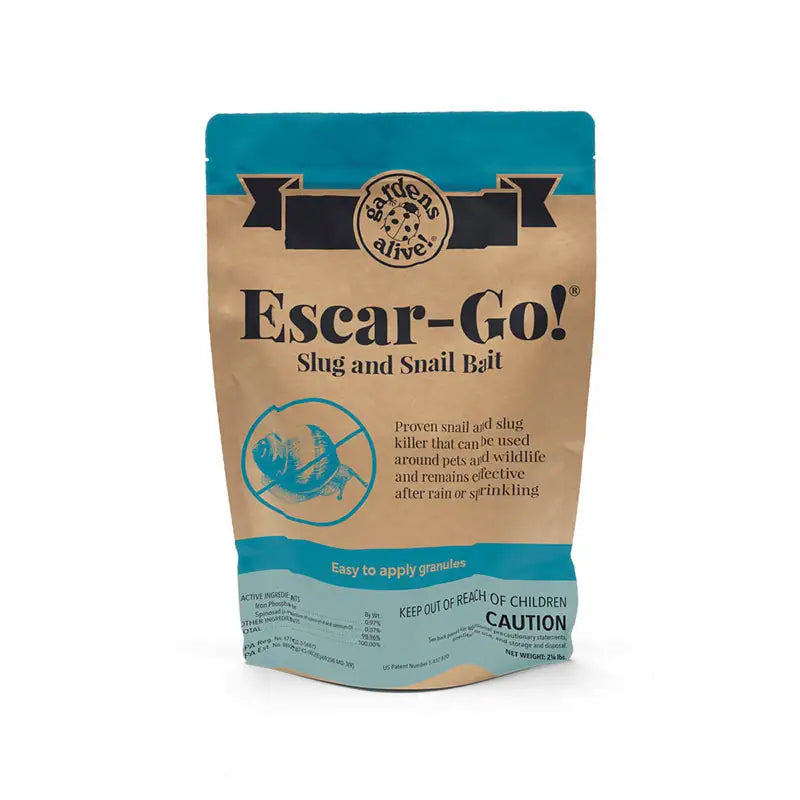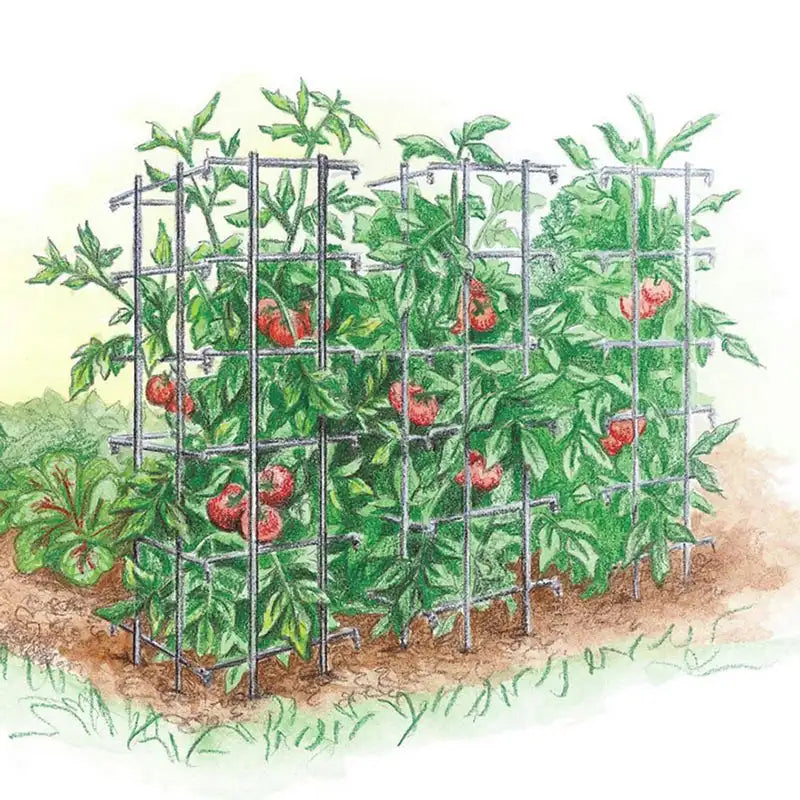Lots of Plants Besides Tomatoes Love Eggshells. Slugs Don't.
Q. Eric from soggy Ellicott City, Maryland (how soggy is it? His email was wet!) writes: "One of the tips I've picked up from your podcast is to sprinkle crushed eggshells into the planting holes of my tomatoes. I've been saving my eggshells ever since and have a few crushed quarts of them. My problem is that I only plant a couple of tomatoes a year. Can I use my stockpile of eggshells elsewhere in the garden? I grow mostly flowers - are eggshells useful for flowers? What about flat earth and raised bed flowers and vegetables? Is there anything that wouldn't benefit from a bit more calcium, or is it possible to have too much of a good thing?"
A. Perfect time of year for this question, Eric, as many of our new listeners may not know 'the old eggshell trick' and this gives them time to amass the number of shells they'll need for tomato planting season.
To wit: Placing crushed eggshells in the planting hole of tomatoes provides two distinct benefits:
Next in line to receive any eggshell largesse is your cucumber crop. In this case, dig a regular sized planting hole (tomatoes are the only plant whose stem gets buried deeply), drop your baby cuke plants into the hole, add a dozen crushed eggshells, fill the hole back in with the soil you removed and then mulch with compost. The calcium in the eggshells will make your cucumbers naturally crisper--both raw and after they're pickled!
After that, there are a surprising number of ornamentals that want either supplemental calcium or a slighter higher pH (which the crushed shells also provide). The numbers are kind of mind-boggling--there are several large books devoted exclusively to flowers that prefer alkaline soil!
Here are some of the best-known candidates:
  • Lilacs
  • Bluebeard (caryopteris)
  • Clematis
  • Forsythia
  • Barberry (just stick to the non-invasive cultivars bred not to produce viable seed)
  • Crocus
  • Red Tip Photonia; &
  • Buddelia (Butterfly Bush)
The greatly-misunderstood boxwood also falls into this category, as despite being evergreen, it suffers in soil that isn't on the alkaline side. If you're out of eggshells at this point, ask a friend with a fireplace or wood stove for some of their ashes. Ashes from a hardwood fire are almost as alkaline as agricultural lime. And boxwood loves wood ash.
And finally, if you're NOT out of eggshells yet, crush them up very finely and use them to make a ring around slug-prone plants like lettuce, potatoes and hostas. Slugs are extremely weird creatures--copper gives them an electrical shock; diatomaceous earth (DE) dehydrates them; they can't metabolize iron (used to make non-toxic slug baits)...
And eggshells are doubly deadly to the slimers. Their bodies can't handle the calcium in the shells and the microscopically sharp edges of the crushed shells (so small that we can't see or feel them) tear them apart if they try and cross over them (much like DE).
One final note: Make sure your soils aren't already alkaline before you add anything to up the pH; and never ever use eggshells or other pH-raisers around acid-loving plants like azaleas and rhododendrons.
A. Perfect time of year for this question, Eric, as many of our new listeners may not know 'the old eggshell trick' and this gives them time to amass the number of shells they'll need for tomato planting season.
To wit: Placing crushed eggshells in the planting hole of tomatoes provides two distinct benefits:
1) It totally prevents blossom end rot, one of the worst tomato tragedies, when tomatoes that are almost ripe suddenly turn black on the bottom ('the blossom end') and fall apart. Greenhouse growers can avoid this problem by supplying even amounts of water during the growing season because their plants are not exposed to rain. But those of us growing out in the open can't possibly avoid the 'uneven watering' that causes the problem--but we can add eggshells.When tomatoes have adequate soil calcium, they can control their internal water movement enough to avoid the extreme pressures that cause the blossom end to burst. Over the years, I've found crushed eggshells to be the perfect way to supply this calcium. The shells release their calcium slowly over the season, providing a nice steady supply of the nutrient--and you weren't going to keep them! Sure, you could add the shells to your compost pile, but they are reluctant to break down and are often the only raw ingredient left visible after the rest of the compost is finished.
2) Adequate soil calcium is also necessary for the finest-tasting tomatoes to develop the rich, full, complex flavors we're seeking when we try and grow 'the perfect tomato'. The basic flavor of every tomato is a blend of sweetness and acidity, but the super-tasty ones--generally old adored heirlooms like Brandywine, Black Krim and Mortgage Lifter--also develop complex volatile aromatic oils that lend distinct--and delicious--'back flavors' to the fruits. They can't do this without calcium; and again, crushed eggshells are the perfect slow release form of that nutrient.So, save up your eggshells. After you've finished a carton of eggs, let the shells air dry out in the open for a day or two (no need to rinse them; they don't smell). When tomato planting time comes around, dig a deep hole for each transplant, pull off all the bottom leaves, drop the transplant down into the hole, finely crush a dozen dried eggshells overtop of the rootball, then fill the hole back up with the same soil you removed--no 'improved soil in the hole'; then mulch with two inches of compost and provide good support for the vining plant.
Next in line to receive any eggshell largesse is your cucumber crop. In this case, dig a regular sized planting hole (tomatoes are the only plant whose stem gets buried deeply), drop your baby cuke plants into the hole, add a dozen crushed eggshells, fill the hole back in with the soil you removed and then mulch with compost. The calcium in the eggshells will make your cucumbers naturally crisper--both raw and after they're pickled!
After that, there are a surprising number of ornamentals that want either supplemental calcium or a slighter higher pH (which the crushed shells also provide). The numbers are kind of mind-boggling--there are several large books devoted exclusively to flowers that prefer alkaline soil!
Here are some of the best-known candidates:
  • Lilacs
  • Bluebeard (caryopteris)
  • Clematis
  • Forsythia
  • Barberry (just stick to the non-invasive cultivars bred not to produce viable seed)
  • Crocus
  • Red Tip Photonia; &
  • Buddelia (Butterfly Bush)
The greatly-misunderstood boxwood also falls into this category, as despite being evergreen, it suffers in soil that isn't on the alkaline side. If you're out of eggshells at this point, ask a friend with a fireplace or wood stove for some of their ashes. Ashes from a hardwood fire are almost as alkaline as agricultural lime. And boxwood loves wood ash.
And finally, if you're NOT out of eggshells yet, crush them up very finely and use them to make a ring around slug-prone plants like lettuce, potatoes and hostas. Slugs are extremely weird creatures--copper gives them an electrical shock; diatomaceous earth (DE) dehydrates them; they can't metabolize iron (used to make non-toxic slug baits)...
And eggshells are doubly deadly to the slimers. Their bodies can't handle the calcium in the shells and the microscopically sharp edges of the crushed shells (so small that we can't see or feel them) tear them apart if they try and cross over them (much like DE).
One final note: Make sure your soils aren't already alkaline before you add anything to up the pH; and never ever use eggshells or other pH-raisers around acid-loving plants like azaleas and rhododendrons.



